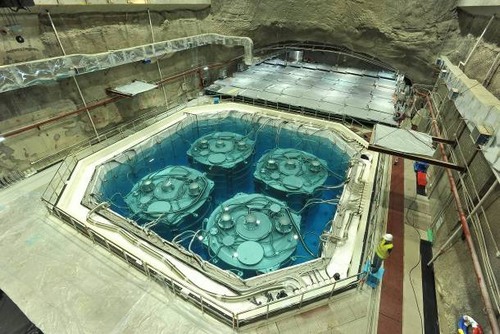Daya Bay: All detectors are in operation now
All the eight detectors of the Daya Bay Reactor Neutrino Experiment have been successfully installed, and started to take data on October 19,
 |
| the installed detectors in Daya Bay Experiment |
By December, 2011, though there had been two detectors short of completion, scientists in the Daya Bay collaboration decided to start data-taking with the six massive detectors built and buried in the mountains adjacent to the powerful nuclear reactors of the China Guangdong Nuclear Power Group. In the following 55 days, tens of thousands of interactions of electron anti-neutrinos had been caught and observed by the six massive detectors.
The copious data revealed for the first time the strong signal of the effect that the scientists had been searching for, a so-called "mixing angle" named theta one-three (written θ13) which the researchers measured with unmatched precision. On March 8, 2012, the Daya Bay collaboration announced its first results indicating that sin2 2 θ13 is equal to 0.092 plus or minus 0.017, which were highly spoken of by scientists around the world.
Neutrinos fill the Universe, and their effect on the evolution and structure of the Universe is therefore significant. Learning more about this new kind of neutrino oscillation may also help scientists unlock the secret of why antimatter is largely missing from the Universe, which makes our existence possible.
With the running of all the eight detectors, the experiment will be more powerful in getting its job done. Let's congratulate in advance that more and significant scientific results can be achieved in the future.